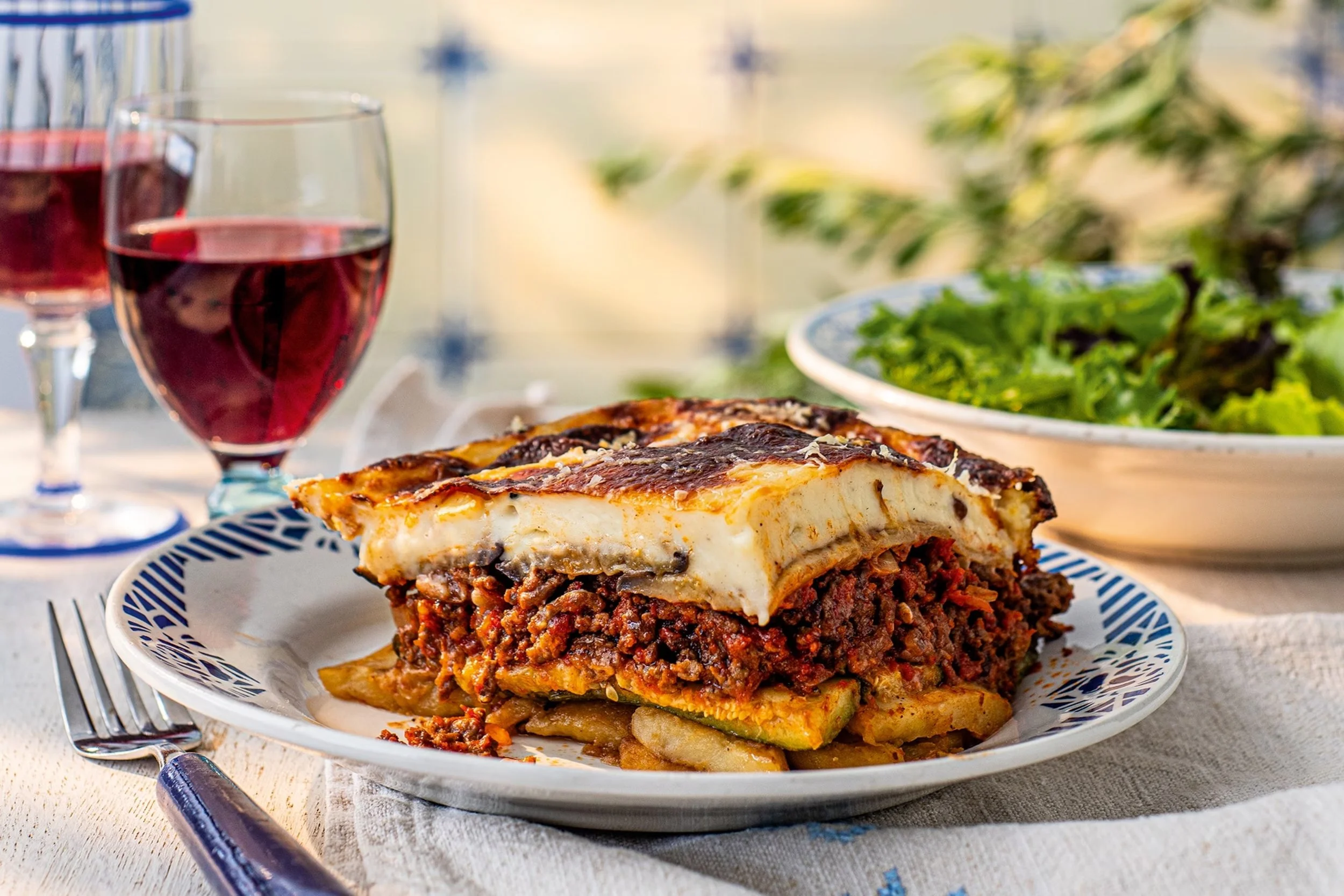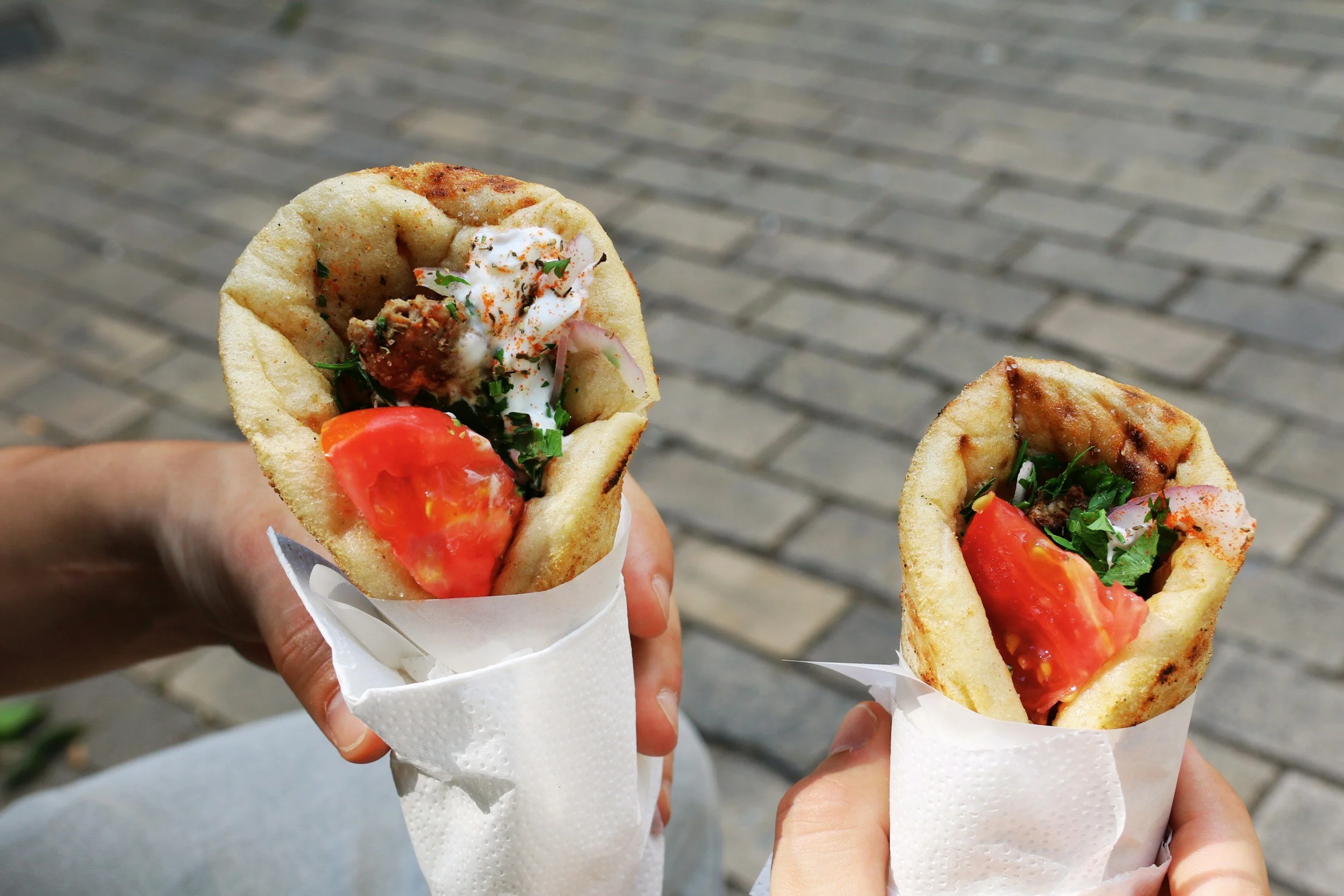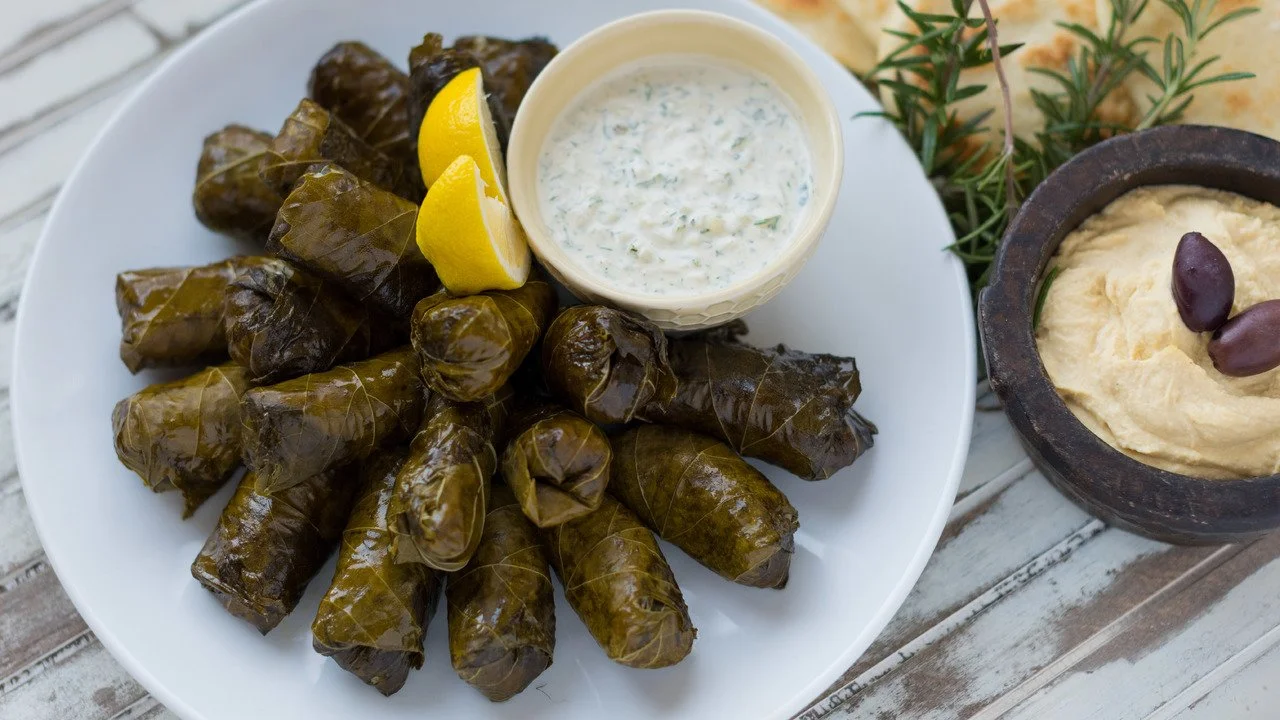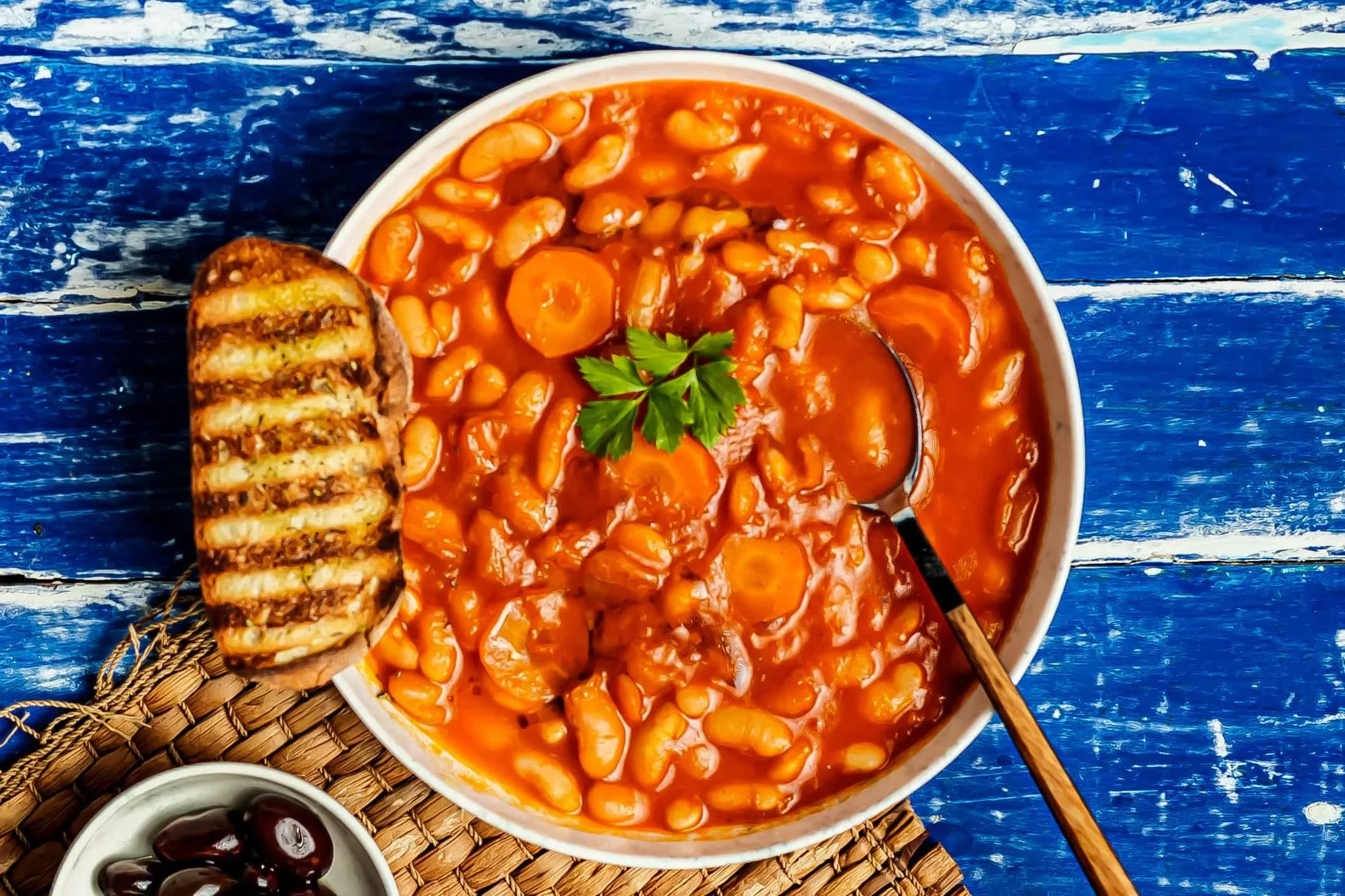Eat Like a Local in Greece: Classic Dishes, Drinks and How to Order
If you want to understand Greece, start with the food. From the smoky scent of souvlaki sizzling on a street corner to a long, laughter-filled lunch in a sun-drenched taverna, eating in Greece is never just about filling up — it’s a celebration of life, family, and tradition.
Greek cuisine is steeped in history. Influences from ancient civilisations, Ottoman rule, and centuries of regional variation have shaped a food culture that’s as diverse as the landscape itself. And while menus might list dishes you’ve heard of — like moussaka or gyros — the real magic is in knowing how to eat them, where to find them, and what makes each one special.
Whether you’re wandering through a bustling Athens market or sitting down in a sleepy island village, this guide will help you navigate Greek food like a local. We’re focusing on the absolute classics — the dishes that appear on every family table, that locals never tire of, and that travellers should make a point to try at least once. Plus, we’ll cover the drinks to match and a few golden rules for dining the Greek way.
Ready to dig in?
Moussaka
A dish layered in history
Moussaka might be the most recognisable Greek dish abroad — and for good reason. Rich, layered, and full of warming spices, it’s the kind of comfort food that brings families together on Sundays and features proudly on traditional taverna menus.
But moussaka isn’t as ancient as you might think. While its ingredients — aubergines, minced meat, tomatoes — have deep roots in the eastern Mediterranean, the version we know today was refined in the early 20th century by Greek chef Nikolaos Tselementes. He added the signature béchamel topping, influenced by French cuisine, giving moussaka its now-iconic creamy crown.
A typical serving includes layers of fried or roasted aubergine, spiced minced lamb or beef (often with a hint of cinnamon or allspice), sliced potatoes, and that velvety béchamel baked until golden. It’s hearty, satisfying, and best enjoyed freshly made — beware of overly mass-produced versions served lukewarm in tourist traps.
What to know when ordering
– Usually served hot but can also be enjoyed warm or room temp
– Not typically eaten as a side — this is the main event
– Locals might pair it with a simple Greek salad and bread to mop up the sauce
Where to try it
– Family-run tavernas are your best bet for homemade-style moussaka
– In summer, look out for lighter twists using courgette or yoghurt béchamel
Moussaka.
Souvlaki
Greece’s oldest fast food
Souvlaki has been feeding Greeks for centuries — quite literally. Archaeologists have found skewers and grill stands dating back to ancient times, and the modern-day version hasn’t strayed too far from its roots.
At its core, souvlaki is simply small cubes of meat — usually pork, but also chicken or lamb — marinated in oil, lemon, oregano and grilled on a skewer over open flame. It’s one of the most beloved street foods in Greece, eaten standing up, wrapped in paper, or served as part of a larger meal.
While tourists often confuse it with gyros, souvlaki is all about the skewer. You’ll sometimes get it served wrapped in pita with salad and sauce, but traditionally it’s served straight from the stick, often with chips or a side of bread.
What to know when ordering
– Ask for it “kalamaki” style in Athens (skewer only) or “souvlaki pita” for the wrap version
– Pork is traditional, but chicken is widely available
– Great option if you’re after something quick, filling and fresh
Where to try it
– Small grill houses or street stalls known as “psistaries”
– Look for spots where locals are queuing — it’s always a good sign
– Don’t be afraid to eat it on the go, just like the locals do
Souvlaki.
Gyros
The spinning icon of Greek street food
If there’s one Greek dish travellers can’t get enough of, it’s gyros. Pronounced “yee-ros,” this street food staple is made from meat cooked on a vertical rotisserie — usually pork or chicken — shaved off in thin slices and tucked into a warm pita with salad, sauce, and often, a handful of chips.
Gyros shares its DNA with Turkey’s döner kebab and the Middle Eastern shawarma, but it’s got a uniquely Greek flavour. Tzatziki is the most common sauce (a cooling blend of yoghurt, cucumber, garlic and dill), though some places swap in mustard or spicy sauces depending on region.
Despite its fast-food label, a well-made gyros is anything but basic — the balance of textures, freshness, and bold flavours is something locals swear by.
What to know when ordering
– Ask for it “ap’ola” if you want the full works: meat, salad, tzatziki, chips, onions and tomato
– You can also get a plate version, with the pita on the side
– Many places offer vegetarian versions with halloumi or mushrooms
Where to try it
– Found everywhere, from cities to tiny islands — but quality varies
– Look for local joints with rotating spits, not microwaved pre-sliced meat
– Great for lunch on the go or a late-night bite after a few ouzos
Gyros.
Spanakopita
The perfect grab-and-go pie
Spanakopita is one of Greece’s most beloved pastries — a golden, flaky triangle of filo dough packed with spinach, feta cheese, spring onions, and plenty of fresh herbs like dill and parsley. It’s the kind of thing you can eat any time of day, whether you're grabbing breakfast from a bakery or snacking on the go between ferry rides.
The roots of spanakopita go deep, with ties to both rural home cooking and the broader Eastern Mediterranean pie tradition. While the filling is what makes it sing, the delicate layers of crisp filo are just as essential — and when it’s done right, every bite crackles.
You’ll often find it alongside tiropita (cheese pie) in bakeries, and sometimes with a twist — filled with leeks, wild greens, or even mushrooms depending on the region and season.
What to know when ordering
– Common in bakeries and casual eateries, served warm or at room temp
– Great for vegetarians, though always check if it includes egg
– Sometimes comes in large slabs, other times in neat hand pies
Where to try it
– Go early to a local bakery — fresh batches sell fast
– For an authentic bite, look for versions made with hand-rolled filo, especially in northern Greece
– Street markets and ferry snack bars also tend to have decent ones
Spanakopita.
Pastitsio
Greek comfort food at its finest
Think of pastitsio as Greece’s answer to lasagna — but with its own unique twist. This baked pasta dish is made with thick tubular pasta (usually macaronia), layered with rich, cinnamon-spiced minced beef or lamb, tomato sauce, and topped with a creamy béchamel that turns golden in the oven.
The name comes from the Italian pasticcio, meaning "mess" or "pie," and like moussaka, its modern form owes a lot to early 20th-century chef Nikolaos Tselementes. His French-influenced béchamel became a defining feature and elevated pastitsio from rustic dish to Sunday lunch favourite.
Pastitsio is hearty, slightly sweet from the spices, and often found in both home kitchens and family-run tavernas. It’s the kind of dish that tastes even better the next day — and Greeks will happily argue over whose yiayia makes it best.
What to know when ordering
– Usually served as a main, often with salad or bread
– Cinnamon in the meat sauce is traditional — don’t be surprised by the flavour
– Béchamel-heavy, so it’s rich — you probably won’t need a starter
Where to try it
– Look for local tavernas offering “home-cooked” daily specials
– Often served at lunchtime more than dinner
– In northern Greece, you might find variations with more tomato or even no béchamel
Pastitsio.
Dolmades
Ancient parcels of flavour
Dolmades are a small dish with a long legacy. These delicate parcels of vine leaves stuffed with rice, herbs, and sometimes minced meat date back to the Byzantine era and even earlier. Their name comes from the Turkish dolma, meaning "stuffed", but they’ve been thoroughly embraced into Greek home cooking and tavernas alike.
The vegetarian version is the most common, especially as part of a meze spread — filled with rice, dill, parsley, pine nuts, and a generous squeeze of lemon. When served warm, they might come topped with avgolemono — a rich egg-lemon sauce that’s a staple in Greek kitchens.
Tiny, tangy, and often handmade by someone's yiayia, dolmades are the kind of dish that reveal just how much care and history goes into even the simplest Greek food.
What to know when ordering
– Served cold as a meze or warm as part of a meal
– Vegetarian by default, but ask if you’re unsure
– The lemony kick is key — don’t skip it!
Where to try it
– Found at most tavernas, especially as part of a starter plate
– Best in places that make them in-house rather than from a tin
– Ask for them with avgolemono if you’re in a region that serves them hot
Dolmades.
Fasolada
The humble national dish
Fasolada doesn’t often make the tourist menus — but ask any Greek and they’ll tell you it’s the unofficial national dish. This simple yet deeply satisfying white bean stew has been a staple of the Greek table for generations, especially during Lent and the colder months.
Made with dried white beans (usually gigantes or fasolia), carrots, celery, onion, olive oil and tomato, fasolada is a celebration of modest ingredients done right. There’s no meat, but the flavours are rich, earthy and comforting — especially when served with crusty bread and olives on the side.
It’s also a dish that reflects Greece’s agricultural soul: beans from the north, olive oil from the south, and seasonal vegetables from wherever the garden allows.
What to know when ordering
– Usually served as a main in winter or during fasting periods
– Always vegan — unless someone’s added sausage (rare, but worth asking)
– Best eaten with crusty bread and a slab of feta on the side
Where to try it
– Look for daily specials in small village tavernas or workers’ canteens
– Often made at home — some family-run places only serve it once or twice a week
– Even better in the mountains or northern regions where it’s extra hearty
Fasolada.
What to Drink in Greece
Greek cuisine doesn’t just shine on the plate — it’s also rich in traditional drinks, each with its own story, ritual, and perfect pairing. From strong aniseed spirits to herbal teas plucked from mountain slopes, what you drink in Greece is as important as what you eat.
Whether you’re clinking glasses in a seaside taverna or sipping slowly in a kafeneio, here’s what locals actually drink — and how to enjoy it like they do.
Ouzo
The most iconic of Greek spirits, ouzo is a clear, anise-flavoured drink that turns cloudy when mixed with water or ice. It’s made for slow sipping, always alongside food — especially salty, fatty meze like grilled octopus or olives. Never taken as a shot.
How to drink it:
– Poured over ice, or with a splash of cold water
– Always with food — never on an empty stomach
– Ideal afternoon drink with a view
Tsipouro
Similar to grappa, tsipouro is a potent distilled spirit made from grape skins. In northern Greece, it’s often served with or without anise, depending on the region. More rustic than ouzo, and often homemade.
How to drink it:
– In small glasses, shared around a meze spread
– Stronger than ouzo, but equally social
– Popular in Crete as raki, especially after meals
Retsina
White or rosé wine flavoured with pine resin — a love-it-or-hate-it experience. Its origins go back to ancient times when pine was used to seal wine amphorae. Today, it’s making a small comeback among natural wine lovers.
How to drink it:
– Chilled, with grilled dishes or fried appetisers
– Best tried in small carafes from a taverna house pour
– Modern versions are smoother and less resin-heavy
Greek Wine
Greece has a thriving (and ancient) wine culture that often gets overlooked. Look for varieties like Assyrtiko from Santorini (crisp and citrusy), Xinomavro from northern Greece (bold and red), and Agiorgitiko from the Peloponnese (smooth and spicy).
How to drink it:
– By the carafe in a taverna, or bottled at wineries
– Don’t be afraid to ask for the house wine — it’s often excellent
– Pair whites with seafood, reds with grilled meats or pastitsio
Greek Coffee
Unfiltered, thick, and strong — Greek coffee is simmered slowly in a briki and served in small cups with the grounds settling at the bottom. It’s about slowing down and savouring the moment.
How to drink it:
– Ask for it sketos (no sugar), metrios (medium), or glykos (sweet)
– Don’t stir once it’s served — sip carefully and leave the grounds
– Best enjoyed in a quiet kafeneio, ideally over a game of backgammon
Mountain Tea (Tsai tou vounou)
A naturally caffeine-free herbal tea made from the dried flowers and stems of sideritis plants growing in the highlands. Known for its soothing, earthy flavour and health benefits.
How to drink it:
– Boiled fresh with honey and lemon
– Often served after meals, especially in winter
– A favourite in the mountains and among older generations
Oceanside Ouzo.
How to Eat Like a Local
More than food — it’s a ritual
In Greece, eating isn’t just a necessity — it’s a social event, a slow ritual, and a reason to gather. Whether it’s a midweek lunch or a five-hour Sunday feast, meals are about connection, not just consumption. If you really want to eat like a local, it’s not just what you order — it’s how you eat it.
Here’s how to blend in like you’ve been dining in tavernas your whole life:
Share everything
There’s no “my dish” and “your dish” in a Greek taverna. Most meals are built around the meze format — a series of small plates placed in the middle of the table to be shared by everyone. Even mains are often ordered to be split. If you’re travelling in a group, take the opportunity to sample a bit of everything.
Don’t rush
Time slows down at a Greek table. There’s no pressure to eat quickly, clear the table, or even order everything at once. Locals linger — over wine, over laughs, over debates. Let the meal unfold slowly.
Ask about the specials
Many tavernas don’t have full printed menus — or if they do, it may not reflect what’s fresh that day. Don’t be shy to ask what’s just come out of the kitchen or what the chef recommends. You’ll often get a better, more local experience that way.
Expect the extras
It’s common for meals to end with a little something on the house — fruit, a small dessert, a glass of tsipouro. It’s not a marketing tactic, it’s hospitality. Accept it graciously and enjoy the gesture.
Bread is for everything
You’ll often be served a basket of bread at the start — and it’s not just for starters. Use it to mop up sauces, dips, oil, and anything left on your plate. It’s part of the experience.
Tipping and payment
Tipping is appreciated but not expected. Leaving a few coins or rounding up the bill is enough. In some tavernas, you may need to go to the counter to pay — it’s not considered rude, just how it’s done.
Greek food isn’t just something you eat — it’s something you experience. It tells stories of empires and islands, of family kitchens and village squares. Every dish, from a flaky spanakopita to a hearty bowl of fasolada, connects you to centuries of tradition and a culture where hospitality is a way of life.
By learning a few classic staples, sipping what the locals drink, and embracing the slow, social rhythm of a Greek meal, you’re doing more than filling up — you’re joining in. Whether you’re ordering moussaka in a tucked-away taverna or tearing bread into a bowl of fava with new friends, remember: the best Greek meals are shared, savoured, and never rushed.
So next time you're in Greece, skip the tourist menu. Ask questions, try the daily special, and eat like you’ve been coming here for years. The food will welcome you — just like the people will.









